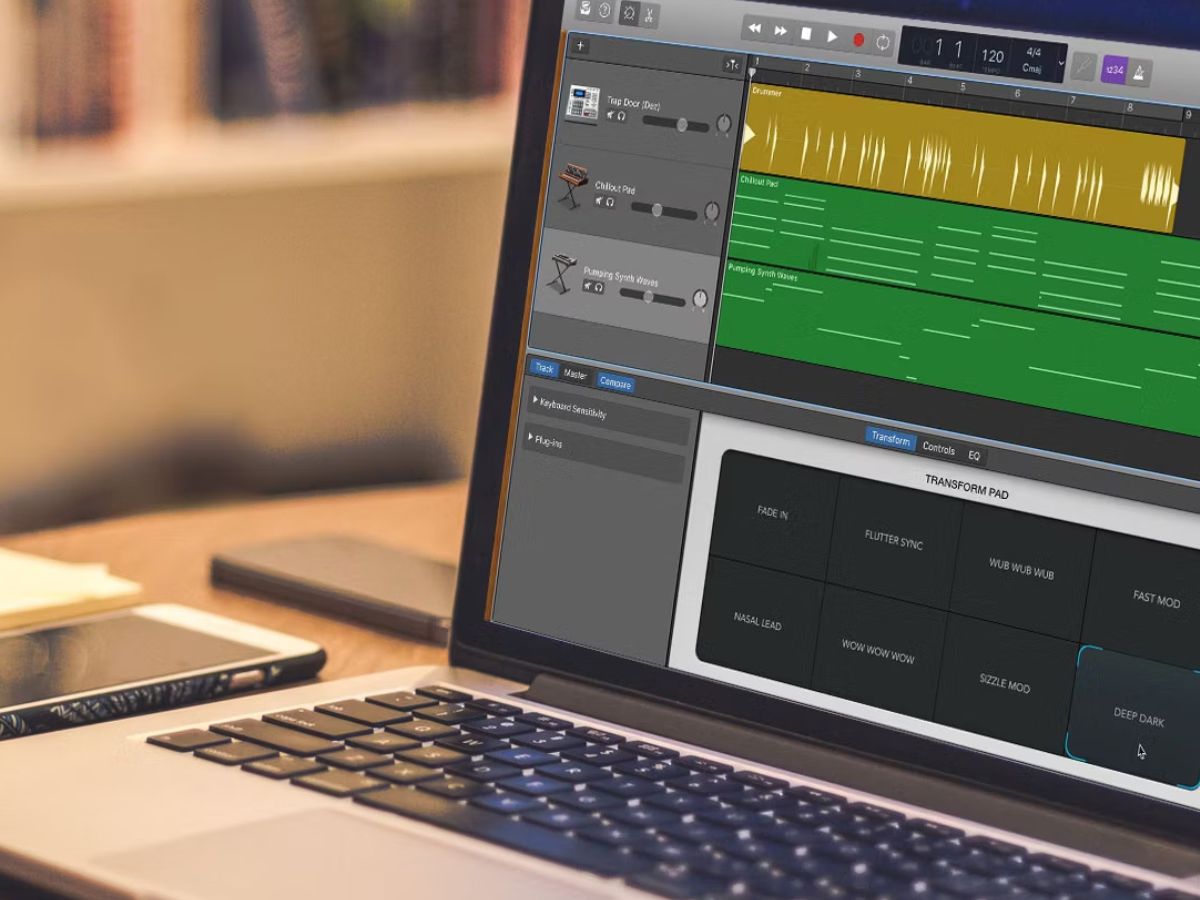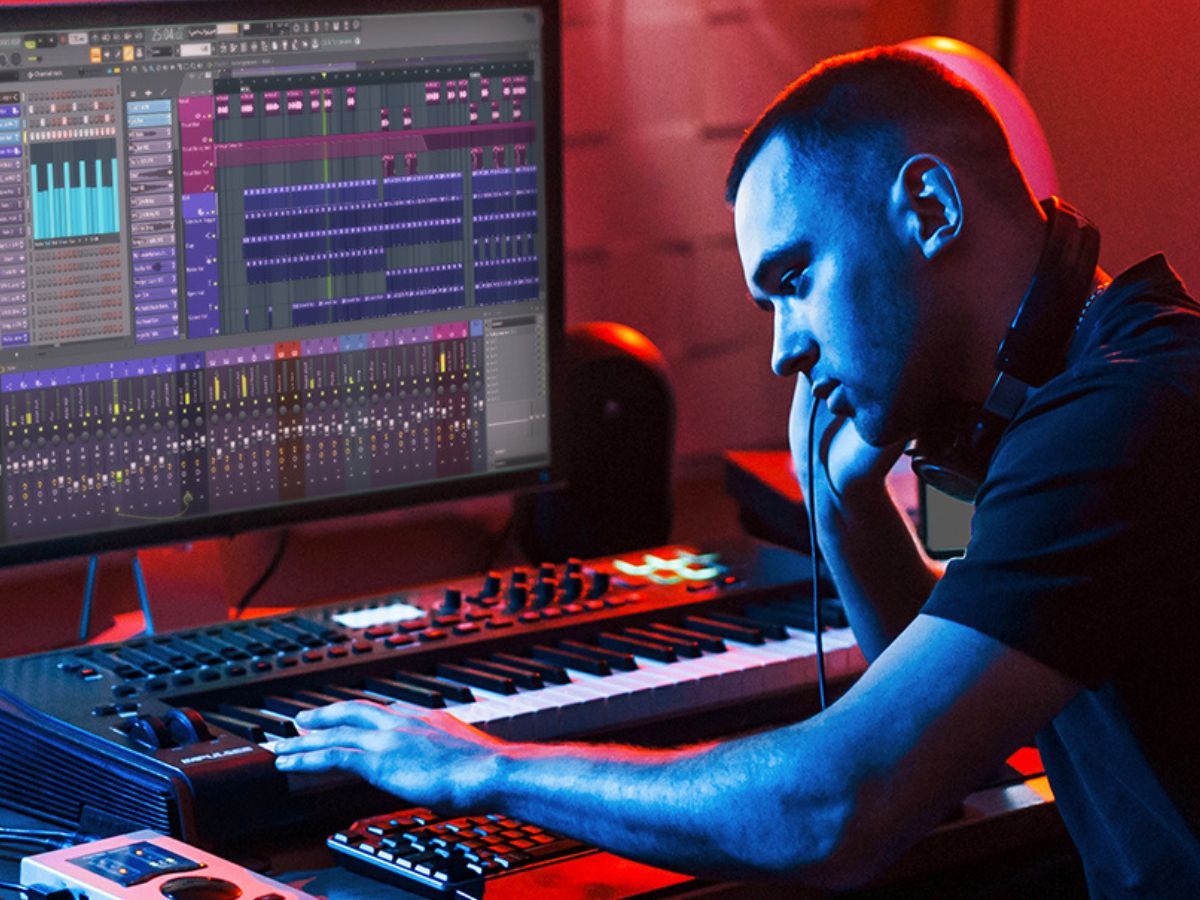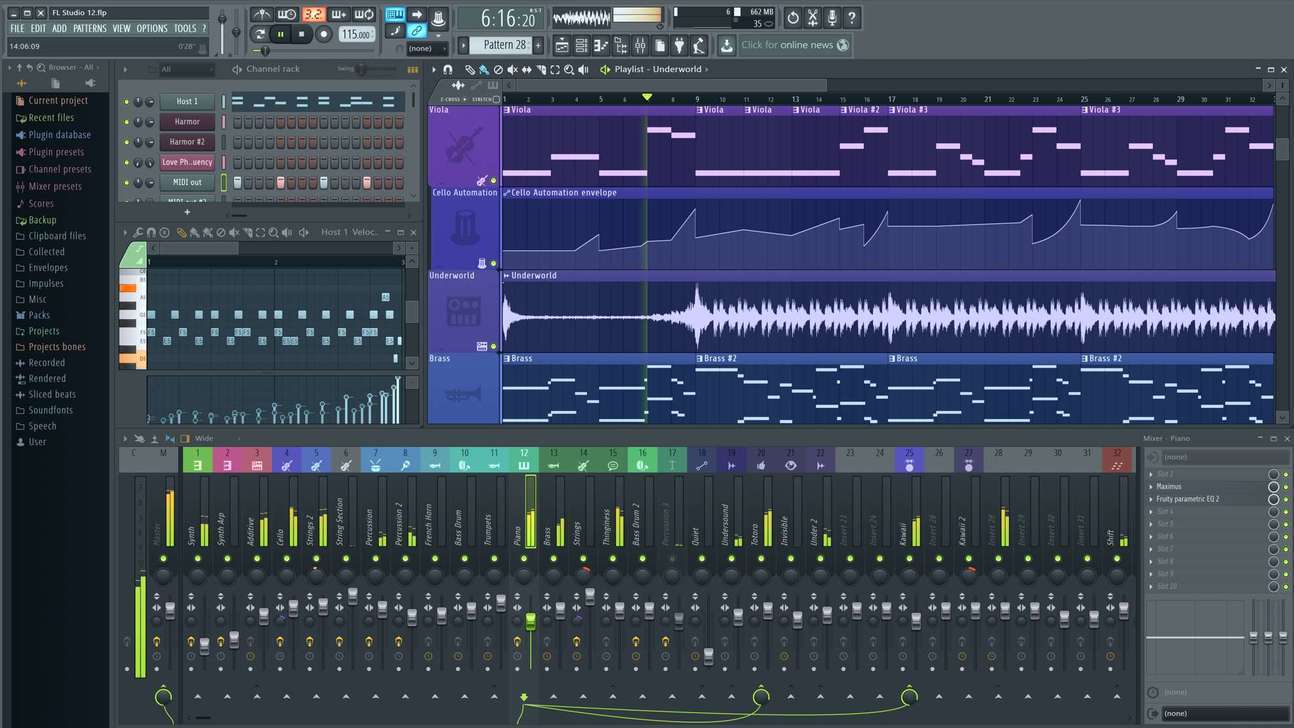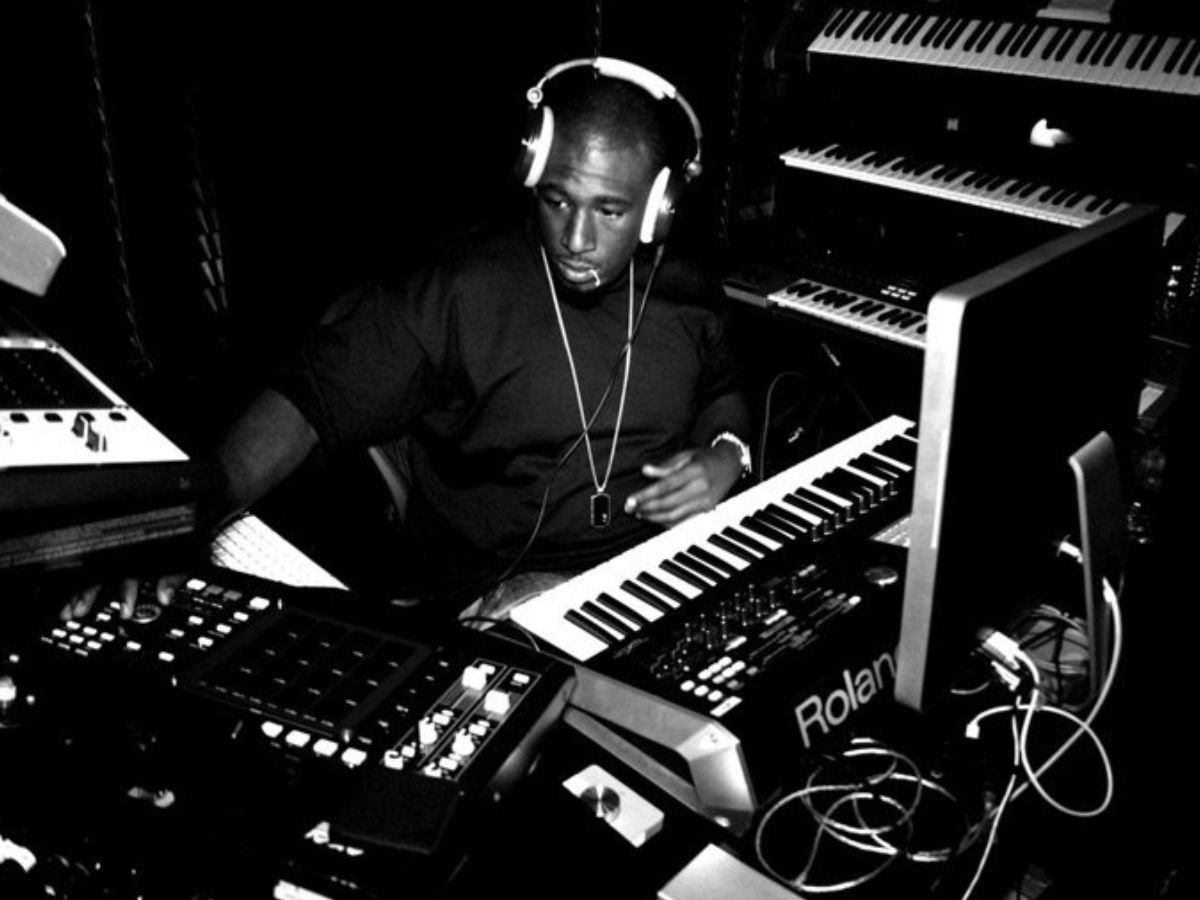

Hip Hop
How To Make A Hip Hop Artist Bio
Modified: January 22, 2024
Learn how to create an engaging hip hop artist bio that captures your unique style and showcases your passion for hip hop music. Transform your story into a powerful tool to attract fans and industry opportunities.
(Many of the links in this article redirect to a specific reviewed product. Your purchase of these products through affiliate links helps to generate commission for AudioLover.com, at no extra cost. Learn more)
Table of Contents
- Introduction
- Understanding the Purpose of an Artist Bio
- Gathering Information
- Choosing the Right Tone and Style
- Structuring Your Artist Bio
- Writing the Opening Paragraph
- Highlighting Your Background and Experience
- Showcasing Your Musical Influences
- Describing Your Unique Artistic Style
- Including Notable Achievements and Collaborations
- Integrating Your Personal Story
- Adding a Call to Action
- Editing and Proofreading Your Artist Bio
- Formatting and Presenting Your Bio
- Updating and Revising Your Bio
- Conclusion
Introduction
Welcome to the world of hip hop, where the rhythm flows and the lyrics speak volumes. Hip hop is not just a genre of music; it’s a cultural movement that has influenced generations and captivated audiences worldwide. From its humble beginnings in the streets of the Bronx to its current status as a global phenomenon, hip hop has evolved and diversified, reflecting the unique experiences and perspectives of its artists.
For hip hop artists, an artist bio is an essential tool to showcase their talents, connect with fans, and attract industry professionals. It’s a way to tell your story, express your artistry, and make a lasting impression. But writing an effective artist bio can be challenging. It requires finding the right balance between self-promotion and authenticity, while also considering search engine optimization (SEO) to improve your online visibility.
In this article, we’ll guide you through the process of creating a compelling hip hop artist bio that resonates with your audience and boosts your online presence. We’ll explore the key elements to include, the right tone and style to adopt, and tips for formatting and updating your bio. So, let’s dive in and learn how to make your hip hop artist bio stand out!
Understanding the Purpose of an Artist Bio
An artist bio serves as a snapshot of your musical journey and provides valuable insight into who you are as an artist. It is an opportunity to make a lasting impression on listeners, industry professionals, and potential collaborators. But what is the purpose of an artist bio?
First and foremost, an artist bio helps to introduce yourself to your audience. It allows fans to gain an understanding of your background, musical style, and artistic vision. By sharing your story, you create a connection and establish a sense of familiarity between you and your listeners. This can ignite interest and curiosity, encouraging them to delve deeper into your music.
Furthermore, an artist bio is essential for industry professionals, including talent scouts, record labels, and music journalists. When they come across your music, they want to learn more about the artist behind the sound. Your bio becomes a tool that showcases your professionalism, experience, and accomplishments, helping to build credibility and establish yourself as a serious artist.
Additionally, an artist bio can also be used to attract potential collaborations. Artists often seek out others to collaborate with, and a well-crafted bio can highlight your unique style and achievements, making you an enticing prospect for other musicians.
From a marketing perspective, an artist bio plays a significant role in your online presence. It is an essential component of your music website, social media profiles, and press kit. It helps with search engine optimization (SEO) by incorporating relevant keywords and phrases, making it easier for people to find you when searching for hip hop artists in your genre.
Ultimately, the purpose of an artist bio is to create a compelling narrative that captivates your audience, establishes your credibility, and sets you apart from the crowd. It is your chance to make a memorable first impression and leave a lasting impact on anyone who reads it.
Gathering Information
Before you start writing your hip hop artist bio, it’s important to gather all the necessary information to showcase your journey, experiences, and musical style. Here are some key aspects you should focus on:
1. Personal Background: Start by collecting details about your personal background. This includes your name, stage name (if applicable), age, and where you’re from. You can also include any unique or interesting aspects of your upbringing that have influenced your music.
2. Musical Journey: Trace your musical journey from the beginning. Include details about when you first started making music, what inspired you to pursue hip hop, and any significant milestones along the way. This could include performances, album releases, or notable collaborations.
3. Influences and Inspirations: Identify the artists and musicians who have influenced and inspired your sound. Discuss their impact on your music and how they’ve shaped your artistic style. This will give readers a glimpse into your musical tastes and influences.
4. Unique Artistic Style: Describe your unique artistic style and what sets you apart from other hip hop artists. Highlight any specific themes or messages that are central to your music. This will help readers understand the essence of your artistry.
5. Achievements and Collaborations: Make a list of your notable achievements, such as awards, chart rankings, or critical acclaim. Additionally, mention any collaborations you’ve had with other artists, producers, or DJs. This showcases your ability to work alongside industry professionals.
6. Personal Story: Consider including elements of your personal story that have played a significant role in your music. This could be experiences of adversity, triumphs, or personal growth. Sharing these personal anecdotes can make your bio more relatable and engaging.
7. Contact Information: Don’t forget to include your contact information, such as your email address, social media handles, and website URL. This allows fans, industry professionals, and potential collaborators to easily connect with you.
By gathering all of this information, you will have a solid foundation for crafting a compelling hip hop artist bio. It will ensure that you present a comprehensive and engaging narrative that resonates with your audience and showcases your unique journey in the world of hip hop.
Choosing the Right Tone and Style
When writing your hip hop artist bio, it’s crucial to choose the right tone and style that aligns with your personality and musical brand. It sets the overall vibe and impression that readers will get when they read your bio. Here are some essential considerations:
1. Reflect Your Artistry: Your bio should reflect your unique artistic style. If your music is upbeat, energetic, and confident, your bio should convey that same energy. If your lyrics have a more introspective and thought-provoking tone, your bio can adopt a similar reflective sentiment. It’s important to create a cohesive narrative that connects your music and your artist bio.
2. Be Authentic: Authenticity is key in hip hop. Your bio should reflect your genuine self and give readers a sense of who you are as a person and artist. Avoid excessive embellishment or overly exaggerated claims. Instead, focus on showcasing your real experiences, achievements, and influences. Honesty and transparency will resonate with your audience and build trust.
3. Engage Your Audience: Consider the demographic and preferences of your target audience. Tailor your tone and style to engage them effectively. If your music appeals to a younger crowd, your bio can adopt a more casual and conversational tone. For a mature audience, a more sophisticated and polished approach may be appropriate. Keep in mind that your bio should be approachable and relatable, regardless of your target audience.
4. Inject Personality: Let your personality shine through in your artist bio. Infuse it with your unique sense of humor, personal insights, or interesting anecdotes. This not only makes your bio more engaging but also helps readers connect with you on a deeper level. Your bio should be more than a list of accomplishments; it should evoke emotions and leave a lasting impression on those who read it.
5. Stand Out: In a crowded industry, it’s essential to stand out from the competition. Find a way to make your bio memorable and distinctive. This could be through the use of vivid imagery, powerful metaphors, or captivating storytelling. By being creative and innovative with your bio, you’ll leave a lasting impression on readers.
Remember, your hip hop artist bio is an opportunity to showcase your unique personality, style, and artistry. By choosing the right tone and style, you’ll create a bio that represents who you are as an artist and connects with your audience on a deeper level.
Structuring Your Artist Bio
An effective structure is essential for capturing the attention of readers and conveying your story in a clear and organized manner. Here’s a suggested structure for your hip hop artist bio:
1. Opening Paragraph: Start with a captivating opening paragraph that grabs the reader’s attention. It should introduce you as an artist, set the tone for your bio, and create intrigue. Consider incorporating a striking quote, an impactful statement, or a description that paints a vivid picture of your music.
2. Background and Experience: In the next section, provide a brief overview of your background and experience in the hip hop industry. Mention your personal background, including your name, stage name (if applicable), and where you’re from. Discuss your journey in hip hop, starting from when you first began making music to any notable accomplishments or milestones along the way.
3. Musical Influences: Share the artists and musicians who have influenced and inspired your sound. Discuss their impact on your music and how they’ve shaped your artistic style. This section allows readers to understand the roots of your artistic expression and offers insights into your musical tastes and influences.
4. Unique Artistic Style: Describe your unique artistic style and what sets you apart from other hip hop artists. Discuss the themes, messages, or emotions that define your music. Highlight any specific techniques, musical elements, or lyrical approaches that make your style distinct.
5. Notable Achievements and Collaborations: Showcase your notable achievements, such as awards, chart rankings, or critical acclaim. Additionally, mention any collaborations you’ve had with other artists, producers, or DJs. This demonstrates your industry recognition and ability to work alongside talented professionals.
6. Personal Story: In this section, delve into your personal story and how it has influenced your music. Share significant experiences or moments of inspiration that have shaped your artistry. This adds depth and relatability to your bio, allowing readers to connect with you on a more emotional level.
7. Call to Action: Conclude your artist bio with a strong call to action. Encourage readers to listen to your music, follow you on social media, or attend upcoming performances. Provide clear and direct instructions on how they can support and engage with your musical journey.
Remember, the structure provided here is a guideline, and you can adapt it to fit your unique story and artistic style. The key is to create a logical flow that keeps readers engaged and interested in learning more about you as a hip hop artist.
Writing the Opening Paragraph
The opening paragraph of your hip hop artist bio is your chance to make a powerful first impression and grab the attention of your readers. It should be captivating, intriguing, and set the tone for the rest of your bio. Here are some tips to help you craft an engaging opening paragraph:
1. Start with a Hook: Begin with a strong hook that immediately grabs the reader’s attention. This could be a captivating quote, a bold statement, or a vivid description that paints a picture of your music. Aim to create curiosity and intrigue, making readers eager to learn more about you and your music.
2. Highlight Your Unique Selling Point: Make sure to showcase your unique selling point right from the start. What sets you apart from other hip hop artists? Is it your storytelling ability, your distinctive flow, or your genre-blending sound? Communicate your unique qualities and strengths to captivate the reader and differentiate yourself in a crowded industry.
3. Create an Emotional Connection: Emotions are a powerful tool to make your opening paragraph resonate with readers. Tap into the emotions that your music evokes and find a way to convey them in your opening. Whether it’s excitement, introspection, empowerment, or vulnerability, make the reader feel something right from the start.
4. Showcase Your Passion: Let your passion for hip hop shine through in your opening paragraph. Express your love for the genre, your dedication to creating meaningful music, and your commitment to your craft. This enthusiasm will draw readers in and spark their interest in exploring your music further.
5. Keep it Concise and Engaging: While you want to make a strong impact, remember to keep the opening paragraph concise. Aim for a few impactful sentences that capture the essence of who you are as an artist. Use descriptive language, but avoid being overly verbose or using unnecessary jargon that may confuse or alienate readers.
Remember, the opening paragraph is like the hook of a song – it should grab attention, set the stage, and make the reader excited to explore more. By crafting a compelling opening paragraph, you’ll engage readers from the start and lay the foundation for an engaging hip hop artist bio.
Highlighting Your Background and Experience
Your background and experience as a hip hop artist provide valuable context for your journey and help readers understand the depth of your musical growth. This section of your artist bio allows you to showcase your accomplishments, musical evolution, and overall impact in the industry. Here are some key points to consider:
1. Early Beginnings: Share the story of your early beginnings in hip hop. Discuss how you were first introduced to the culture, what drew you to the genre, and when you first started making music. Highlight any significant moments or experiences that ignited your passion and set you on your musical path.
2. Milestones and Accomplishments: Highlight your notable milestones and achievements in your hip hop career. This could include performances, tours, awards, or chart rankings. By showcasing your accomplishments, you establish your credibility as an artist and pique the interest of readers.
3. Musical Evolution: Discuss how your music has evolved over time. Talk about the influences, experiences, and artistic growth that have shaped your sound. Explain the changes or transformations you have gone through as an artist, and how these have contributed to your current musical style.
4. Collaborations: Mention any collaborations you’ve had with other artists, producers, or DJs. This demonstrates your ability to work alongside industry professionals and showcases your versatility as an artist. Discuss how these collaborations have influenced your music and contributed to your growth as a hip hop artist.
5. Performance Experience: Highlight any significant performances or showcases you have been a part of. This could include opening for established artists, performing at renowned venues or festivals, or participating in music competitions. Describe the impact these performances have had on your career and how they have helped shape your stage presence and live performance skills.
6. Musical Influences: Discuss the artists and musicians who have influenced your musical style and artistic vision. Explain how their music has inspired you, and how you have incorporated their influences into your own unique sound. This helps readers gain insight into the foundation of your musical style and the artists who have shaped your artistic journey.
By highlighting your background and experience, you provide readers with a comprehensive understanding of your musical growth and impact in the hip hop industry. It helps build trust, establishes your credibility, and creates a deeper connection between you and your audience.
Showcasing Your Musical Influences
As a hip hop artist, your musical influences play a significant role in shaping your unique sound and artistic style. Showcasing your musical influences in your artist bio allows readers to understand the context and inspiration behind your music. Here are some tips on effectively showcasing your musical influences:
1. Identify Influential Artists: Start by identifying the artists who have had the most significant impact on your musical journey. These could be hip hop legends, contemporary stars, or even artists from other genres that have influenced your sound. Make a list of these influential figures.
2. Describe the Impact: For each artist on your list, describe how their music has influenced and inspired you. Discuss the specific aspects of their music that resonate with you, such as their lyrical prowess, their unique production techniques, or their ability to convey emotions through their songs.
3. Explain Incorporation: Explain how you have incorporated the influences of these artists into your own music. Discuss the techniques, styles, or themes that you have adopted from your influences and explain how you have made them your own. This showcases your ability to merge multiple influences and create a unique artistic style.
4. Connect to Your Sound: Discuss how your musical influences have contributed to the development of your unique sound. Explain how these artists have shaped your approach to songwriting, your flow, your delivery, or your overall artistic vision. Show readers how your music is rooted in a rich tapestry of influences.
5. Paint a Musical Landscape: Think of your artist bio as a way to paint a vivid musical landscape. Use descriptive language to create a picture of the sounds, moods, and emotions that your influences bring to your music. This allows readers to visualize and connect with the sonic world you’ve created.
6. Expand Beyond Hip Hop: Don’t be afraid to showcase influences from outside the hip hop genre. Many artists draw inspiration from a diverse range of musical styles, so feel free to include influences from other genres like jazz, funk, soul, rock, or electronic music. This demonstrates your openness to different sounds and influences.
By showcasing your musical influences, you provide readers with insight into the foundation of your artistic style and the artists who have shaped your musical journey. It adds depth and context to your music, allowing fans and industry professionals to appreciate the layers and nuances of your unique sound.
Describing Your Unique Artistic Style
Your unique artistic style sets you apart as a hip hop artist and defines the essence of your music. Describing your artistic style in your artist bio allows readers to understand what makes you distinctive and what they can expect from your music. Here are some tips to effectively describe your unique artistic style:
1. Identify Your Key Elements: Start by identifying the key elements that make your artistic style unique. This could be your lyrical approach, your vocal delivery, your production choices, or your overall sonic aesthetic. By pinpointing these elements, you can create a clear picture of your artistic style.
2. Use Visual and Sensory Language: Utilize descriptive language that engages the senses and paints a vivid picture of your sound. Describe the emotions that your music evokes, the textures and layers in your production, or the imagery evoked by your lyrics. Allow readers to envision and connect with your artistic style on a deeper level.
3. Discuss Genre-Bending or Fusion: If your music incorporates elements from different genres or if you blend various styles together, highlight this in your description. Explain how you seamlessly merge hip hop with other genres, such as R&B, jazz, funk, or electronic music. This demonstrates your versatility and creates curiosity around your artistic style.
4. Highlight Innovative Techniques: If you have developed unique techniques or approaches to your music-making process, showcase them in your bio. This could be your use of sampling, your unconventional song structures, or your experimentation with different sounds and instruments. These innovative techniques highlight your artistry and help you stand out.
5. Discuss Themes and Message: Talk about the themes and messages that are central to your music. Is it social commentary, personal reflection, storytelling, empowerment, or something else? Discuss how these themes intersect with your unique artistic style and how they shape the lyrical content of your songs.
6. Emphasize Authenticity: Authenticity is key in hip hop. Emphasize how your artistic style is a genuine reflection of who you are as a person and artist. Discuss how you stay true to yourself and your experiences, how your music is a medium for self-expression, and how you strive to connect with your audience on a deep and authentic level.
By describing your unique artistic style, you provide readers with a clear understanding of what makes your music special. It helps them connect with your sound and creates anticipation for what they can expect from your future releases. Embrace your individuality and celebrate the distinctiveness of your artistic style.
Including Notable Achievements and Collaborations
Highlighting your notable achievements and collaborations in your hip hop artist bio helps to establish your credibility and showcase your growth and success in the industry. It gives readers valuable insights into the recognition and connections you’ve garnered throughout your career. Here are some tips on including your notable achievements and collaborations in your bio:
1. Mention Awards and Accolades: If you have received any awards or accolades for your music, make sure to mention them. This could include local or national awards, nominations, or any industry recognition. Highlighting these achievements demonstrates your talent and the impact your music has had on others.
2. Showcase Chart Rankings: If any of your songs or albums have achieved chart success, be sure to mention it. Discuss any notable positions you have attained on music charts, whether it’s on local radio stations, streaming platforms, or national charts. This showcases your ability to resonate with listeners and highlights your commercial appeal.
3. Discuss Critical Acclaim: If your music has received positive reviews from critics, feature these accolades in your artist bio. Discuss any favorable reviews, articles, or features from reputable music publications or websites. This adds credibility to your artistry and demonstrates that your talent has been recognized by industry professionals.
4. Highlight Collaborations: Collaborations can have a significant impact on your music and can help expand your reach and fanbase. Mention any notable collaborations you’ve had with other artists, producers, or DJs. Discuss how these collaborations have elevated your music and allowed you to work with respected industry professionals.
5. Mention Influential Artists You’ve Worked With: If you’ve had the opportunity to work with influential or well-known artists in the hip hop industry, make sure to showcase these collaborations. Discuss how these collaborations have shaped your artistic growth and how they have impacted your music. This highlights your ability to collaborate and work alongside established artists.
6. Discuss Performance Opportunities: If you have had the chance to perform at renowned venues, festivals, or events, include this in your bio. Mention any standout performances or opportunities to showcase your talent in front of larger audiences. This demonstrates your stage presence, professionalism, and ability to captivate crowds.
By including your notable achievements and collaborations in your artist bio, you demonstrate your growth, recognition, and impact in the hip hop industry. It adds credibility to your brand, attracts the attention of industry professionals, and creates intrigue among potential listeners and fans.
Integrating Your Personal Story
Your personal story is an integral part of your identity as a hip hop artist. Integrating your personal story into your artist bio allows readers to connect with you on a deeper level, understand the motivations behind your music, and relate to your experiences. Here’s how you can effectively integrate your personal story:
1. Choose Relevant Anecdotes: Select specific anecdotes or experiences from your life that have had a significant impact on your music journey. These could be moments of triumph, struggle, self-discovery, or personal growth. Pick anecdotes that are relevant to your artistic development and reflect your values and authenticity.
2. Highlight Adversity and Challenges: Share how you’ve overcome challenges and adversity in your personal life. Discuss how these experiences have shaped your perspective, influenced your music, and helped you develop resilience. This allows readers to empathize with your journey and appreciate the authenticity in your artistry.
3. Express Your Passions and Influences: Discuss the passions, other than music, that have played a role in shaping your personal story. Whether it’s community activism, social justice, or a specific hobby, express how these personal interests have influenced your artistic style and your desire to make a positive impact through your music.
4. Connect Emotionally: Infuse your personal story with emotions that reflect the depth and vulnerability of your music. Express your inner thoughts, struggles, aspirations, and emotions in a relatable way. This allows readers to connect with you on an emotional level and establishes a connection that goes beyond mere listenership.
5. Show Growth and Transformation: Discuss the personal growth and transformation you have experienced through your music journey. Explain how your values, perspectives, and artistic style have evolved over time. This showcases your commitment to self-improvement and demonstrates that your music is a reflection of your personal development.
6. Relate to Your Audience: Ensure that your personal story resonates with the experiences and aspirations of your target audience. Find commonalities that create a sense of shared understanding and demonstrate that your music speaks to their own personal stories and struggles. This fosters a stronger connection with your listeners.
By integrating your personal story into your artist bio, you create a narrative that adds depth, relatability, and authenticity to your music. It allows readers to understand not only your artistry but also the person behind the music, fostering a genuine connection that goes beyond the surface level.
Adding a Call to Action
Adding a call to action (CTA) in your hip hop artist bio is a crucial element to engage your audience and encourage them to take specific actions that support your music career. A well-crafted CTA can help you expand your fan base, increase streaming numbers, and grow your online presence. Here are some tips on adding an effective call to action:
1. Encourage Music Streaming: Invite your audience to stream your music on platforms like Spotify, Apple Music, or SoundCloud. Provide links or instructions on how to access your songs and albums. Highlight a few of your most popular or recent releases to entice listeners to give your music a listen.
2. Ask for Social Media Follows: Encourage your audience to follow you on social media platforms, such as Instagram, Twitter, or Facebook. Explain the benefits of following you, such as exclusive content, behind-the-scenes updates, or early access to new music. Include direct links or handles to make it easy for readers to connect with you.
3. Promote Merchandise Sales: If you have merchandise available for sale, promote it and encourage your audience to make a purchase. Highlight the unique designs, quality, and limited availability of your merchandise to create a sense of exclusivity and desirability.
4. Invite Show Attendance: If you have upcoming performances or shows, invite your audience to attend. Provide details about the date, venue, and ticket availability. Create a sense of excitement by mentioning any special surprises or collaborations that might occur during the event.
5. Request Newsletter Sign-ups: If you have a newsletter or mailing list, ask your audience to sign up. Explain the benefits of joining your mailing list, such as receiving updates on new music releases, exclusive content, or access to pre-sale tickets. Assure readers that their information will be kept confidential and that they can unsubscribe at any time.
6. Encourage User-Generated Content: Foster a sense of community by encouraging your audience to create and share their own content related to your music. Ask them to tag you in their posts, use specific hashtags, or participate in challenges. This not only engages your audience but also helps to spread the word about your music organically.
Ensure that your call to action is clear, concise, and easy to act upon. Use action verbs and create a sense of urgency or exclusivity to motivate your audience to take the desired action. Remember to regularly update your call to action to keep it relevant and aligned with your current goals and promotions.
Editing and Proofreading Your Artist Bio
Once you’ve written your hip hop artist bio, it’s essential to take the time to edit and proofread it thoroughly. Editing and proofreading ensure that your bio is polished, error-free, and effectively conveys your message to readers. Here are some tips to help you in this process:
1. Revise for Clarity and Conciseness: Read through your bio and ensure that each sentence and paragraph communicates your message clearly and concisely. Remove any unnecessary or repetitive information that doesn’t add value. Use clear and straightforward language to improve comprehension.
2. Check for Grammar and Spelling Errors: Carefully review your bio for any grammar or spelling mistakes. Use grammar and spell-check tools to catch common errors. Pay attention to verb tenses, subject-verb agreement, punctuation, and sentence structure. A typo-free bio presents a professional image and enhances your credibility.
3. Review for Consistency in Tone and Style: Check for consistency in the tone and style of your writing. Ensure that your bio maintains a consistent voice throughout, and that it aligns with your brand and image as an artist. Avoid sudden shifts in language, tense, or perspective that may confuse readers.
4. Read Aloud: Read your bio aloud to identify any awkward phrasing, run-on sentences, or unclear passages. Reading aloud helps you catch errors or areas that may need rewording. Listen to the flow and rhythm of your sentences, making adjustments as necessary for a smoother reading experience.
5. Get Feedback: Share your bio with trusted friends, colleagues, or fellow musicians to get their feedback. They may spot areas that need improvement, offer suggestions for clarity, or point out any inconsistencies you may have missed. Consider their feedback and make necessary revisions to enhance your bio.
6. Trim Excess Information: Trim any excessive or irrelevant information that doesn’t contribute to the overall message or artistic image you want to convey. Ensure that your bio remains focused, concise, and engaging. Remember, less is often more when it comes to capturing and maintaining readers’ attention.
7. Proofread Formatting: Lastly, go through your bio to ensure that the formatting is consistent and visually appealing. Check for proper use of capitalization, italicization, bolding, and bullet points. Ensure that any links or contact information are accurate and clickable.
By thoroughly editing and proofreading your artist bio, you ensure that it is error-free, impactful, and professionally presented. Taking the time to refine your bio will result in a polished representation of your artistry, increasing your chances of making a lasting impression on readers.
Formatting and Presenting Your Bio
Formatting and presenting your hip hop artist bio is crucial for creating a visually appealing and easily readable piece of content. A well-formatted bio enhances the overall presentation and engages readers by making the information easily digestible. Here are some tips to help you effectively format and present your bio:
1. Use Clear Headings and Subheadings: Organize your bio with clear headings and subheadings to break up the information and guide readers through the content. Use appropriate HTML tags, such as
and
, to create visual hierarchy and make it easier for readers to navigate the different sections of your bio.
2. Utilize Bullet Points and Numbered Lists: Incorporate bullet points or numbered lists to highlight key achievements, notable collaborations, or important points. This formatting choice helps the reader quickly grasp the information and promotes readability. Bullet points can be particularly effective when highlighting a list of influential artists you’ve worked with or major milestones in your career.
3. Keep Paragraphs and Sentences Concise: Break your content into shorter paragraphs to avoid overwhelming readers with large blocks of text. Aim for about 3-4 sentences per paragraph. Use concise and impactful sentences to maintain reader engagement and prevent information from getting lost or overlooked.
4. Incorporate Relevant Visuals: Visual elements can enhance the visual appeal of your bio and make it more engaging. Include high-quality photos of yourself that align with your brand and music style. Additionally, you can embed videos or link to music samples to provide a dynamic and interactive experience for readers.
5. Ensure Readability: Choose a legible font and appropriate font size for your bio. Stick to common web-safe fonts to ensure compatibility across different devices and browsers. Consider using a larger font size for headings to make them stand out, but keep the body text at a comfortably readable size. Maintain sufficient line spacing to improve readability.
6. Incorporate White Space: Avoid overcrowding your bio with too much text. Incorporate ample white space between paragraphs and sections to give the content room to breathe. This not only improves readability but also creates a visually appealing layout that is more inviting to readers.
7. Include Contact Information and Links: Make it easy for readers to connect with you by including your contact information and relevant links. This may include your email address, social media handles, website, or links to your music on streaming platforms. Ensure that these details are prominently displayed at the end of your bio, increasing the likelihood of engagement and collaboration opportunities.
Remember, a well-formatted and visually appealing presentation of your artist bio increases its impact and engagement with readers. By implementing these formatting tips, you can create a bio that not only informs but also visually captivates your audience.
Updating and Revising Your Bio
As your music career progresses and evolves, it is important to regularly update and revise your hip hop artist bio. This ensures that your bio remains relevant, accurate, and reflects your current achievements and artistic direction. Here are some key considerations for updating and revising your bio:
1. Stay Current with Achievements: As you achieve new milestones, earn accolades, or release new music, make sure to update your bio accordingly. Include any awards, chart rankings, collaborations, or performances that have occurred since the last revision. Keeping your bio up to date showcases your growth and ongoing success.
2. Reflect Artistic Progression: As your artistic style and direction evolve, adjust the description of your musical style in your bio accordingly. Emphasize the new elements, influences, or sounds that have shaped your music since the previous version. This helps readers understand the progression of your artistry.
3. Update Collaborations: If you’ve recently worked with notable artists or producers, include these new collaborations in your bio. Highlight the impact these collaborations have had on your music and career, illustrating your ability to work with various talents in the industry.
4. Consider Revised Goals and Direction: If you have recently shifted your focus or have set new goals for your music career, reflect these changes in your bio. This could involve updating your mission statement or discussing your current artistic vision. This gives readers insight into your future plans and aspirations.
5. Remove Outdated Information: Review your bio periodically to identify any outdated or irrelevant information that no longer aligns with your current brand or artistic direction. Remove details that no longer accurately represent your journey or no longer contribute to the overall narrative you want to convey.
6. Seek Feedback: Reach out to trusted friends, colleagues, or industry professionals for their input on your bio. Ask for feedback on clarity, messaging, and overall impact. Consider different perspectives and make revisions based on the insights you gather.
7. Regularly Review SEO Optimization: As you update your bio, ensure that you continue to incorporate relevant keywords and phrases that improve your search engine optimization (SEO). Regularly review and revise any SEO elements to ensure that your bio stays visible and discoverable in search engine results.
Remember, your artist bio is dynamic and should evolve alongside your music career. By regularly updating and revising your bio, you ensure that it remains an accurate representation of your journey, achievements, and artistic growth, while also maintaining its effectiveness in engaging readers and attracting new opportunities.
Conclusion
Crafting a compelling and engaging hip hop artist bio is essential to effectively communicate your story, musical style, and unique artistic identity. By following the tips and guidelines outlined in this article, you can create a bio that captures the attention of readers, establishes your credibility, and leaves a lasting impression.
Remember to gather all relevant information, highlight your background and experiences, and showcase your musical influences. Describe your unique artistic style and include notable achievements and collaborations to support your credibility. Integrate your personal story to create a deeper connection with your audience, and don’t forget to add a persuasive call to action to encourage listeners to engage with your music.
It is important to review and revise your artist bio regularly to ensure it stays current and accurate. Keep it concise, well-formatted, and visually appealing to enhance readability and engagement. Incorporate relevant visuals, break up the text with headings and bullet points, and utilize white space to create a visually pleasing presentation.
Continue to update your bio as your music career progresses, reflecting your achievements, growth, and evolving artistic direction. Always strive for authenticity and a personal connection with your audience, as these elements will set you apart and resonate with listeners.
In conclusion, your hip hop artist bio is a powerful tool to showcase your talent, connect with your audience, and open doors to new opportunities in the music industry. Seize this opportunity to tell your story, express your artistry, and captivate readers. With an optimized and well-crafted bio, you can leave a memorable impression, foster a loyal fan base, and propel your hip hop career to new heights.











